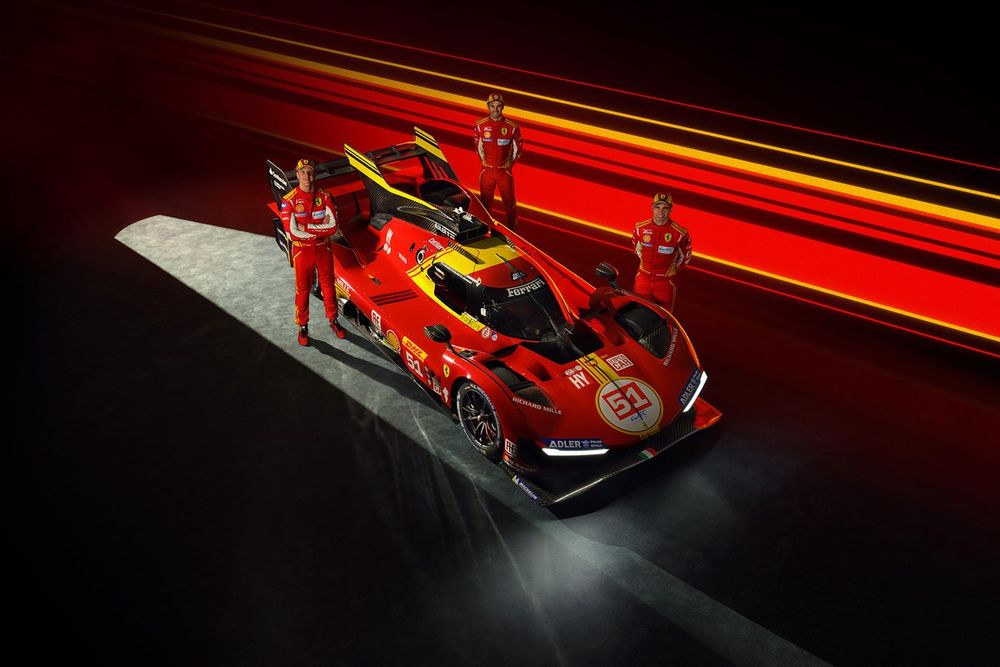
This year’s red-and-yellow colour scheme of the 499Ps fielded in the Hypercar class by the AF Corse team once again celebrates the success of the previous factory Ferrari prototype, the 312PB of 1972 and 1973.
The livery incorporates a new shade of Ferrari racing red inspired by the F2007 Formula 1 car in which Kimi Raikkonen took the Italian manufacturer’s most recent world drivers’ title.
What is described in Ferrari’s statement on the reveal of the livery as a “deep, intense red” has been subtly tweaked to create a “glossier version” to increase the car’s visibility at night and in poor conditions.
There is also more yellow Giallo, the colour of Ferrari’s home city of Modena, on the car.
“The main objective is to accentuate the car’s body and cockpit with two staggered colour blocks,” Ferrari said.
The launch of the livery ahead of the kick off of the 2024 WEC campaign with the next weekend’s official two-day Prologue pre-event test at the Losail circuit in Qatar has been timed to coincide with the the anniversary of the birth of marque founder Enzo Ferrari.

The season will start with the Qatar 1812Km at the same circuit on 2 March.
Ferrari is going into its second WEC Hypercar campaign with an unchanged driver line-up: 2023 Le Mans 24 Hours winners James Calado, Alessandro Pier Guidi and Antonio Giovinazzi again race the #51 entry, while Antonio Fuoco, Nicklas Nielsen and Miguel Molina are teamed in #50.
The red-and-yellow colour scheme of the 312PB was one of a number of liveries used during Ferrari’s 1972 and 1973 World Championship for Makes campaigns.
It was with a chassis in these colours in which Jacky Ickx and Mario Andretti won the 1972 Sebring 12 Hours, helping Ferrari to the WCM title.
Ickx and Brian Redman would win two more races in the ‘yellow’ entry at Monza and the Nurburgring the following year in what turned out to be the factory’s final season of prototype racing before the decision to focus on F1.







